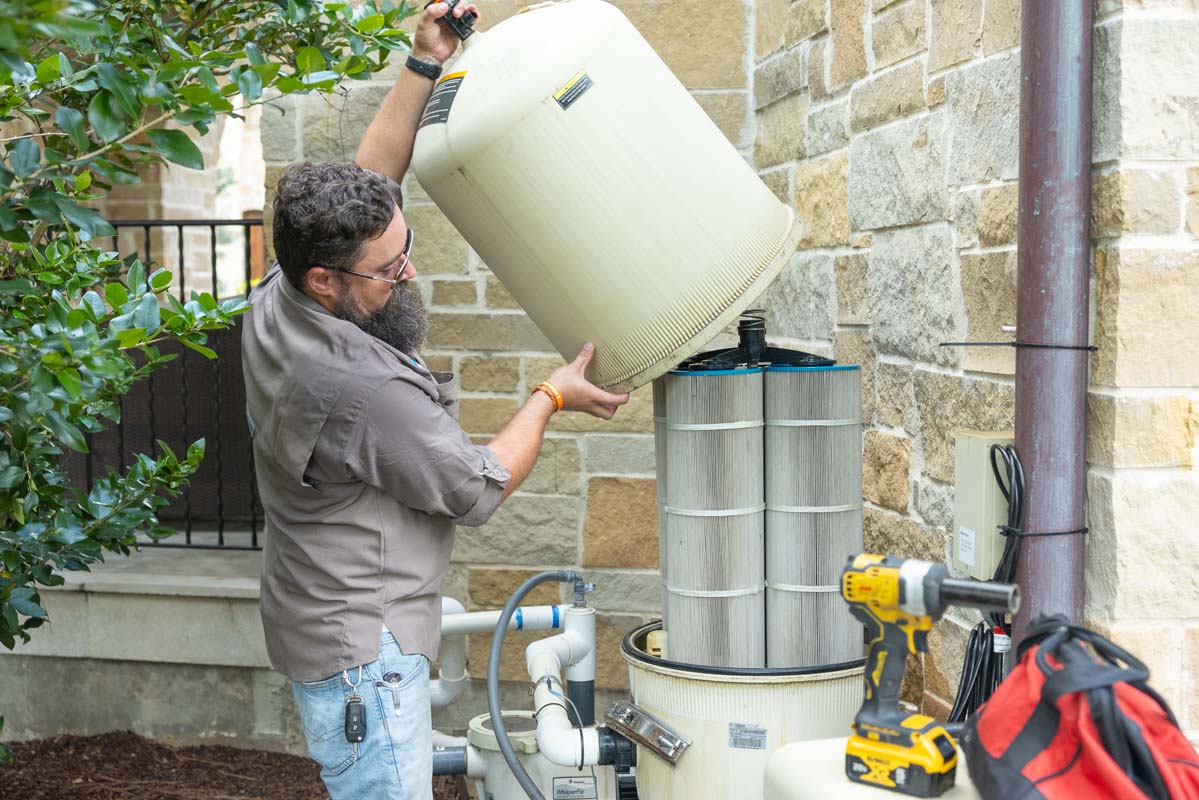Did you know that homes with pools in the Houston area are being listed nearly 54 percent higher on average than comparable homes without a pool? That kind of premium shows that investing in your pool renovation can do more than just improve aesthetics — it can meaningfully boost resale value. In this post I’ll cover what kinds of pool renovation ideas tend to offer the best return, what to consider when planning upgrades, and how to maximize your home’s appeal.
Why Pool Renovation Matters
A pool is often seen as a luxury amenity, but its condition and design play a big role in whether it adds value or becomes a liability. Older, outdated, or poorly maintained pools can drag down a property’s appeal, while a well-executed pool renovation can turn the pool into a selling highlight. Real estate data shows that in warm-climate metro areas like Houston, premium features outdoors are increasingly influencing buyer decisions.
Some of the main benefits of pool renovation include:
- Enhancing curb appeal and the outdoor living experience
- Increasing home value and faster resale in certain markets
- Improving energy efficiency and lowering long-term maintenance costs
- Creating a safer and more comfortable environment
Top Pool Renovation Ideas That Add Value
Here are renovation ideas that tend to deliver both aesthetic improvement and good return on investment:
- Update the Deck & Surrounding Landscaping
Replacing old deck materials, adding stamped concrete, natural stone, or pavers gives a fresh look. Landscaping around the pool area with native plants, shade features, or a pergola enhances visual appeal. - Modernize the Pool Finish
Pool surfaces age, stain, or crack. Upgrading plaster, pebble, or tile finishes can dramatically change your pool’s look. New tile at the waterline or decorative in-pool accents are especially eye-catching. - Improve Pool Lighting & Features
LED lighting (in water or around deck), water features like fountains or spillovers, and smart features like automated cleaning or heating systems make the pool more functional and inviting. - Convert to Saltwater or More Efficient Systems
Switching from chlorine to saltwater systems, installing variable-speed pool pumps, or upgrading filtration systems reduces chemical costs and energy bills while appealing to eco- or health-conscious buyers. - Add Safety & Convenience Elements
Safety rails, non-slip surfaces, pool covers, fencing, and child-safe features improve safety and compliance. Also consider easy access entries (built in steps or tanning ledges) to broaden appeal to families. - Enhance Comfort & Entertainment
Outdoor kitchens, seating or lounge areas, poolside bars, or even outdoor showers enhance functionality. Shade features like umbrellas or more permanent structures help usability during hot months.
Cost & ROI Considerations
It’s important to balance what you spend with what you’ll likely recoup. Here are key things to keep in mind:
- A typical pool remodel in Houston costs between $4,700 and $11,200, with an average around $7,900 depending on how much work is needed.
- The value a pool adds to a home in Texas often ranges from 5-10%, depending on home price, pool condition, neighborhood, features, and maintenance.
- Focus first on high-impact renovations that are relatively low cost (e.g. lighting, finish, surrounding space) before making major structural changes unless needed.
What to Evaluate Before Starting a Pool Renovation
To ensure your pool renovation is a smart investment, evaluate these:
- Current condition of the pool shell, plumbing, pump, and filtration system. If fundamental systems are failing, replacement rather than renovation may make more sense.
- Local climate & usage patterns. In Houston’s long summer season, pool use is high, so comfort upgrades (shade, heating, easy entry) pay off more than in cooler regions.
- Neighborhood standards and resale trends. If nearby homes have updated pools, keeping up improves competitiveness; if not, modest upgrades may be enough.
- Maintenance costs. New features often mean higher upkeep (lighting, pumps, water features). Be sure you or a future buyer can handle that.
- Permits & code requirements. Upgrading safety features, changing electrical or water systems often requires permits and inspections.
Before & After Tips to Maximize Value
Here are practical tips to get the most from your pool renovation:
- Clean and stage the entire pool area when selling – crystal-clear water, clean deck, trimmed landscaping make a big visual difference.
- Use high-quality photos in listing to showcase the renovated pool, especially in daylight or dusk lighting.
- Highlight upgraded features (e.g. saltwater system, energy efficiency, lighting, safety) in your marketing materials.
- Make sure safety features are up to code and present — buyers often expect these.
When Renovation Might Not Be Enough
In some cases renovation may still not deliver strong return, or may even cost more than the increased value:
- The pool is structurally compromised (cracks, shifting soil) — may need full rebuild.
- The pool is very old and maintenance problems are frequent.
- The home is in a neighborhood where pools are rare or undesirable (e.g. small yards, HOA restrictions).
- The costs of renovation + maintenance outweigh what markets reward in your area.
Final Thoughts
Pool renovation is more than just updating tile or adding fancy lighting — it’s about enhancing usability, safety, aesthetics, and matching what homebuyers want in your market. With the right renovations, a pool can become a standout feature that improves your home’s value and buyer appeal. Choosing wisely which upgrades to invest in, keeping future maintenance in view, and aligning designs with your neighborhood can help ensure your renovation yields both enjoyment and financial return.




